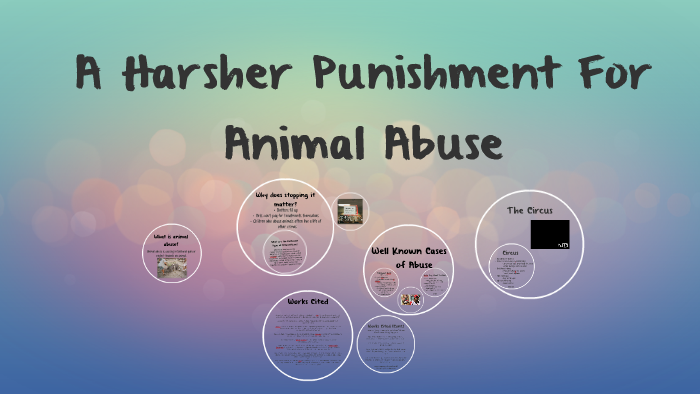In recent years, the conversation surrounding animal cruelty has intensified, sparking debates about the efficacy of punishment. One frequently posed question is whether harsh penalties actually deter individuals from inflicting harm on animals. Understanding this complex issue requires delving into various factors including the psychology of offenders, legal frameworks, and the social implications of punishment.
To begin, it is essential to explore the psychological background of those who perpetrate acts of animal cruelty. Research indicates that animal abusers often share certain psychological traits, including a propensity for antisocial behavior. These characteristics may lead to a diminished sense of empathy, ultimately influencing their decision-making. As a result, one might question whether increasing the severity of penalties can sway such individuals away from their harmful actions.
Next, legal frameworks play a critical role in addressing animal cruelty. Various countries and states have adopted a range of laws, from minimal fines to substantial prison sentences for animal abuse offenses. The rationale for imposing harsher penalties is that strict consequences might foster a fear of reprisal, acting as a deterrent against potential offenders. Nevertheless, the relationship between punitive measures and actual deterrence can be elusive.
One of the most compelling arguments against the effectiveness of harsh punishments is grounded in the nature of the crimes themselves. Often, individuals who engage in animal abuse may not be contemplating the legal repercussions of their actions while in the throes of their offense. This lapse in foresight is compounded by a general societal undercurrent that trivializes animal suffering. For many potential offenders, the immediate gratification derived from their actions may outweigh the risk of retribution. In such cases, legal penalties may feel abstract, creating a disconnect between the crime and its consequences.
Furthermore, there exists a disparity between the severity of animal abuse cases and the corresponding legal repercussions. In instances where the punishment does not seem commensurate with the severity of the crime, it may inadvertently send a message that animal cruelty is a trivial offense. This perception can further embolden abusers, leading to a sense of impunity. The vital question arises: do harsher punishments strengthen the deterrent effect or do they simply reinforce the notion that animal cruelty is not taken seriously within the legal system?
The efficacy of harsher punishments can also be evaluated through the lens of societal attitudes toward animals. A culture that views animals as sentient beings deserving of legal protections is more likely to demand stringent penalties for abuse. On the contrary, a societal paradigm that fails to recognize this reality may perpetuate a cycle of abuse irrespective of punishment severity. Therefore, addressing animal cruelty through the lens of societal sentiment may yield more promising results than merely escalating penalties.
In examining this complex tapestry, we should also consider alternatives to punitive measures. Rehabilitation programs for offenders could offer a significant avenue for change. By providing education on animal welfare and mental health support, we may not only deter future abuse but also promote a more humane treatment of animals. Rather than solely focusing on punitive action, integrating rehabilitative approaches may prove more effective in transforming the mindset of potential abusers.
Moreover, the impact of community involvement cannot be overstated. Grassroots activism often plays a crucial role in fostering a culture of compassion and accountability. Community outreach programs that educate the public about the importance of animal welfare can shift perceptions and contribute to a broader disapproval of cruelty. Such initiatives can encourage citizens to report cases of abuse, creating a more proactive societal stance against animal cruelty.
In evaluating empirical evidence, studies from regions with stricter animal cruelty laws do not conclusively show diminished rates of abuse. This inconsistency suggests that while harsher punishments may resonate with the public’s sense of justice, they do not inherently translate into decreased incidents of animal cruelty. The limitations of a purely punitive approach point to the necessity of adopting a multifaceted strategy that incorporates education, community engagement, and mental health resources.
In conclusion, while the impulse to impose harsher punishments for animal cruelty is deeply rooted in a desire for justice, the evidence suggests that such measures alone may not effectively deter abusers. Understanding the motivations behind animal abuse, re-evaluating societal attitudes, exploring rehabilitative alternatives, and leveraging community involvement are paramount to cultivating a safer environment for animals. Only through a holistic approach can we hope to forge a future that prioritizes the protection of all sentient beings, ensuring that our legal systems reflect humane values and foster compassion.






